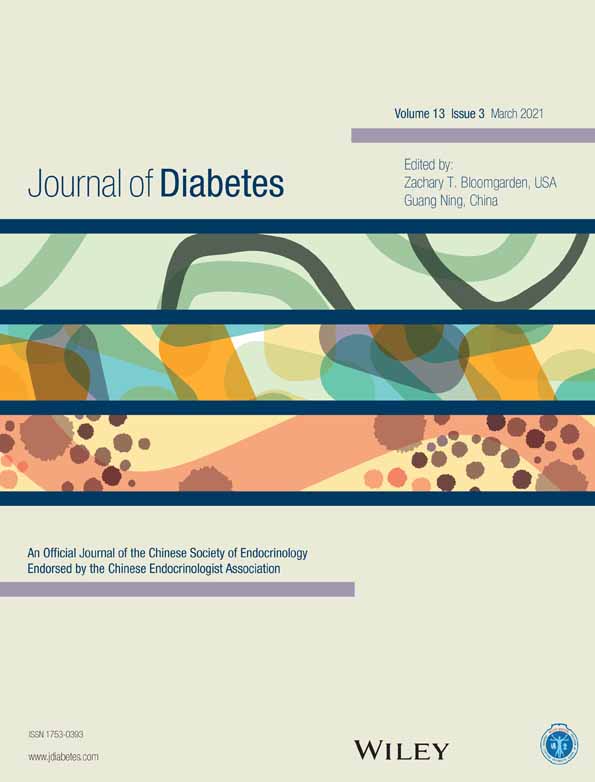Whole exome sequencing identifies three novel gene mutations in patients with the triad of diabetic ketoacidosis, hypertriglyceridemia, and acute pancreatitis
全外显子组测序在糖尿病酮症酸中毒、高三酰甘油血症和急性胰腺炎三联征患者中发现三个新的基因突变
Zixi Huang, Zhenyan Xu and Ruoqing Xu contributed to this work equally.
Funding information: Jiangxi Natural Science Foundation, Grant/Award Number: 20161BAB215241; Science and Technology Foundation of Jiangxi Health and Family Planning Commission, Grant/Award Number: 20172742
Abstract
enBackground
This study aimed to analyze the genetics and treatments of the patients with the triad of diabetic ketoacidosis (DKA), hypertriglyceridemia, and acute pancreatitis (AP).
Methods
We conducted a retrospective study of six patients with the triad of AP, hypertriglyceridemia, and DKA at our hospital. All patients underwent plasmapheresis as part of their treatment. The clinical characteristics of the patients were obtained from the hospital information system and analyzed. Whole exome sequencing was performed using samples of one patient (case 6) and his family members.
Results
The average triglyceride level before plasmapheresis was 3282.17 ± 2975.43 mg/dL (range: 1646-9332 mg/dL). The triglyceride levels dropped by approximately 80% after plasmapheresis. None of the patients developed complications related from plasmapheresis. During follow-up, patients 5 and 6 developed recurrent pancreatitis for several times and showed the formation of pancreatic pseudocysts. We identified three novel heterozygous missense mutations in the family of patient 6, including c.12614C > T (p.Pro4205Leu) in APOB, c.160G > C (p.Glu54Gln) in CILP2, and c.1199C > A (p.Ala400Glu) in PEPD.
Conclusions
Three novel heterozygous missense mutations, including c.12614C > T (p.Pro4205Leu) in APOB, c.160G > C (p.Glu54Gln) in CILP2, and c.1199C > A (p.Ala400Glu) in PEPD were first identified in a patient with the triad of DKA, hypertriglyceridemia, and AP. The combination of plasmapheresis, hydration, and insulin therapy may have the greatest clinical benefits for these patients.
摘要
zh背景
本研究旨在分析糖尿病酮症酸中毒(DKA)、高三酰甘油血症和急性胰腺炎(AP)三联症患者的遗传学基础和治疗方法。
方法
我们对我院的6例AP、高三酰甘油血症和DKA三联症患者进行回顾性研究。所有患者均接受血浆置换术作为治疗的一部分。从医院信息系统获得患者的临床特征并进行分析。使用一名患者(病例6)及其家庭成员的血样进行全外显子组测序。
结果
血浆去除前的平均三酰甘油水平为3281.17±2975.43 mg/dL(范围:1646-9332 mg/dL)。血浆置换后的三酰甘油水平下降了约80%。没有患者出现血浆置换相关的并发症。在随访期间, 患者5和6反复发作几次胰腺炎, 并形成胰腺假性囊肿。我们在患者6的家族中鉴定出三个新的杂合错义突变, 包括APOB中的c.12614C> T(p.Pro4205Leu)、CILP2中的c.160G> C(p.Glu54Gln)和PEPD中的c.1199C> A(p.Ala400Glu)。
结论
首次在患有DKA、高三酰甘油血症和AP的三联征患者中发现了三个新的杂合错义突变, 包括APOB中的c.12614C> T(p.Pro4205Leu)、CILP2中的c.160G> C(p.Glu54Gln)和PEPD中的c.1199C> A(p.Ala400Glu)。血浆置换、水合作用和胰岛素治疗相结合可能对这些患者具有最大的临床益处。




